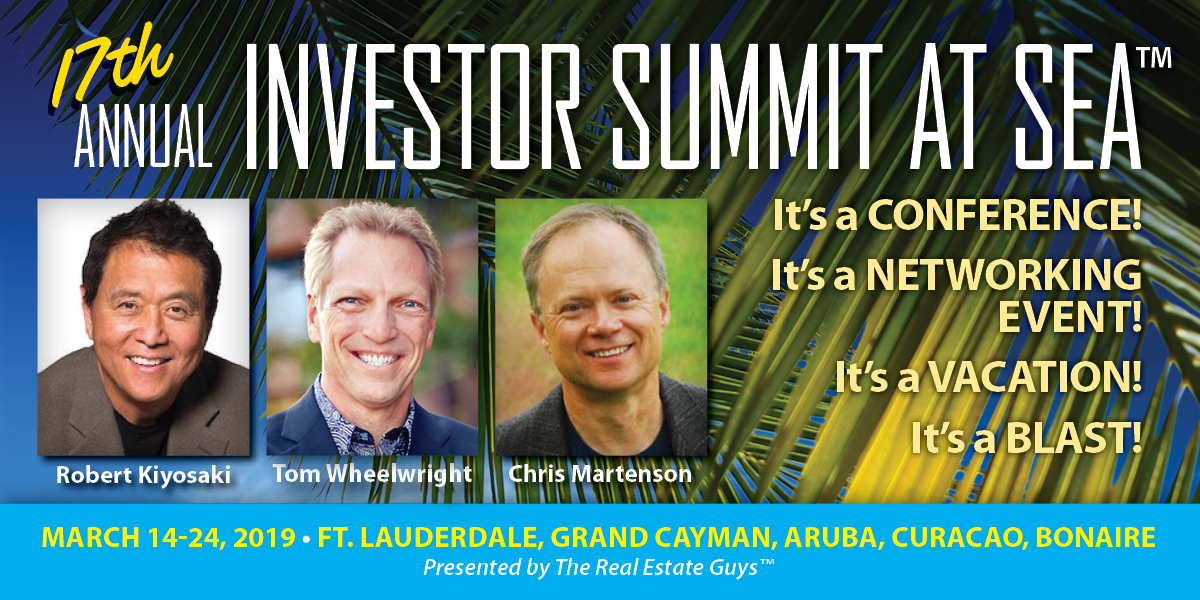TORONTO , March 1, 2019 /CNW/ – Aethon Minerals Corp. (“Aethon”) (AET.V) and AbraPlata Resource Corp. (“AbraPlata”) (TSX-V: ABRA & OTCPK: ABBRF) are pleased to announce that they have entered into a binding letter agreement (the “Agreement”), whereby Aethon will have the exclusive right for a period of approximately five months to (i) perform technical due diligence on AbraPlata’s Diablillos silver-gold project (the “Project”) in Argentina and (ii) negotiate with AbraPlata the terms of an option or other transaction whereby Aethon could acquire a 50% or greater interest in the Project. SSR Mining Inc. (“SSRM”) (SSRM) (SSRM.TO), the original vendor of the Project to AbraPlata, has indicated its intention to support in principle the transactions to be negotiated by the parties pursuant to the Agreement.
The Diablillos project is located in the mining-friendly province of Salta in northwestern Argentina , approximately 150 km southwest of the city of Salta. The Project comprises nine mineral leases acquired by AbraPlata in 2016 from SSRM (formerly Silver Standard Resources Inc.), with multiple known occurrences of epithermal gold-silver mineralization. Exploration work, conducted by a number of operators over the history of the Project, includes approximately 88,000 meters of diamond and reverse circulation drilling in over 475 holes. This drilling has delineated the Oculto and Fantasma deposits, which are weathered high-sulphidation epithermal gold-silver deposits.
Historical Mineral Resource estimates for the Oculto and Fantasma deposits on the Diablillos property, based on a technical report dated April 16, 2018 , are summarized in Table 1. For purposes of Aethon, the Company is reporting the mineral resource as a Historical Estimate per NI 43-101 – Standards of Disclosure for Mineral Projects. A qualified person for Aethon has not done sufficient work to classify the historical estimate as current mineral resources or mineral reserves. Aethon is not treating the historical estimate as current mineral resources or mineral reserves
Table 1 – Diablillos Historical Mineral Resource Estimates
|
Category |
Deposit |
Tonnage |
Ag |
Au |
Contained Ag |
Contained Au |
|
Indicated |
Oculto |
26,850 |
93.0 |
0.85 |
80,300 |
732 |
|
Indicated |
Fantasma |
200 |
98.3 |
– |
650 |
– |
|
Total Indicated |
27,100 |
93.1 |
0.84 |
80,940 |
732 |
|
|
Inferred |
Oculto |
1,000 |
46.8 |
0.89 |
1,510 |
29 |
|
Inferred |
Fantasma |
80 |
75.3 |
– |
190 |
– |
|
Total Inferred |
1,100 |
48.8 |
0.83 |
1,690 |
29 |
|
|
Notes: |
|
|
1. |
Full details of the historical mineral resource estimates can be found in a report by RPA Inc. titled “Technical Report on the Diablillos Project, Salta Province, Argentina” dated April 16, 2018. This report can be found under AbraPlata’s profile on www.SEDAR.com. It is believed that minimal work would be required to upgrade or verify the historical estimate as current mineral resources. |
|
2. |
CIM definitions were followed for Mineral Resources. |
|
3. |
Mineral Resources are estimated at a cut off grade of 40 g/t AgEq for Oculto and 40 g/t Ag for Fantasma. |
|
4. |
Mineral Resources are estimated using long-term metal prices of US$1,500/oz Au and US$23/oz Ag. |
|
5. |
Average bulk density is 2.22 t/m3 for the Indicated category and 2.29 t/m3 for Inferred for Oculto and 2.00 t/m3 for both Indicated and Inferred categories for Fantasma. |
|
6. |
The estimate was constrained by pit shells for both Oculto and Fantasma. |
Highlights of the Project
- The Diablillos project contains a historical estimate of Measured and Indicated Resources of over 80 million ounces of silver and 730,000 ounces of gold, or 142 million silver-equivalent ounces at spot prices. Mineralization remains open at depth with excellent potential for extensions of high grade mineralization.
- Aethon and AbraPlata believe exploration potential exists to increase resources significantly, especially gold resources. Hydrothermal breccias at Oculto extend into the basement and have strong potential for high grade gold mineralization and to date have been largely untested.
- With funding from Aethon, the main Oculto deposit at Diablillos will be categorized into geometallurgical domains based on re-logging and structural geology work done by AbraPlata. A metallurgical test work program will be conducted on existing samples with the aim of optimizing the flowsheet for the Project and estimating silver and gold recoveries. This work is expected to take three to four months.
Mr. John Miniotis , Interim CEO of Aethon, commented, “This transaction represents an outstanding opportunity for Aethon to become involved in a high-quality, advanced exploration project. In addition to the already substantial defined silver and gold historic resource at Diablillos, the Project hosts several under-explored targets that we believe offer excellent opportunities for new discoveries in a favourable mining jurisdiction. Opportunities of this nature are few and far between, and we look forward to working with AbraPlata with the aim of creating value for our respective shareholders.”
Mr. Hernan Zaballa , Chairman of AbraPlata, commented, “We are excited to be entering into this agreement with Aethon, which brings additional technical expertise and financial resources that can help us advance the Diablillos project. Also, in the event that we are successful in negotiating with Aethon, in the coming months, arrangements that will permit our respective shareholders to jointly participate in the rewards that will come from combining our efforts and resources in the further exploration and advancement of the Project, we take comfort that SSRM has indicated a willingness to consider deferring the due dates of scheduled property payments so that we can maximize the funds available for exploring and advancing the Project. We wish to thank SSRM for its flexibility and support.”
Transaction Summary
The following is a summary of the principal terms of the Agreement:
- Aethon shall have the exclusive right until July 26, 2019 (the “Exclusivity Period”), to complete its due diligence and negotiate the terms of, and enter into an option agreement (the “Option Agreement”) with AbraPlata, pursuant to which Aethon can earn a 50% interest in the Project.
- In consideration for the Exclusivity Period, Aethon agrees to make an upfront payment of USD$50,000 to AbraPlata.
- By June 28, 2019 , Period, Aethon will spend a minimum of USD$150,000 on expenditures in connection with a metallurgical testing program and other related test work to be carried out on the Project.
If Aethon fulfills the above covenants and elects to exercise the Option by fulfilling the conditions, Aethon and AbraPlata shall negotiate the Option Agreement. On exercise of the Option, Aethon shall:
- issue to AbraPlata the number of Aethon common shares that would result in AbraPlata owning 9.9% of the then issued and outstanding Aethon shares; and
- subscribe, by way of a private placement, for a number of AbraPlata common shares that would result in Aethon owning 9.9% of the then issued and outstanding AbraPlata shares. The subscription price per AbraPlata share to be issued shall be equal to the greater of (i) the closing market price of AbraPlata on the day that the Option is exercised, and (ii) CAD$0.06 .
AbraPlata also has written assurances from SSRM that it will forbear from enforcing payment of an outstanding NSR royalty payment until October 31, 2019 , provided no further event of default occurs, and that it would consider providing its agreement to delay property payments of USD$5 million and USD$7 million by up to four years under certain circumstances, including a merger of Aethon and AbraPlata, provided that it is satisfied with the definitive transaction terms and the provision of such security and other assurances as it determines to be necessary or desirable to protect and preserve its rights and interests, and it receives certain additional consideration.
Investors are cautioned that there is no assurance that Aethon and AbraPlata will successfully negotiate an Option Agreement or other transaction whereby Aethon would acquire an interest in the Project or that any such transaction, if successfully negotiated, would ultimately be consummated.
Next Steps
Aethon’s first phase program on the Diablillos Project will have several objectives, including:
- A review of the drill data on the Oculto zone to determine how representative the sampling for metallurgical testing of the open pit resource silver dominant zone has been. This review will determine whether additional sampling/metallurgical testing is required for the open pit scenario and, if so, additional test-work will be completed;
- A review of additional epithermal style gold dominant resources within the Diablillos project area in preparation for future reconnaissance drilling; and
- A review of historical drill data to determine if higher grade silver and gold zones could potentially be exploited using underground mining methods.
AbraPlata Management Change and Issuance of Stock Options
AbraPlata announces that Willem Fuchter has resigned as President and CEO, effective immediately. Mr. Fuchter will continue to serve as a director of AbraPlata and will provide additional services under a consulting agreement. The board of directors of AbraPlata thanks Mr. Fuchter for his role in creating the company and advancing the understanding of the Diablillos project. Robert Bruggeman , a director of AbraPlata, has been appointed Interim Chief Executive Officer. Mr. Bruggeman has more than 20 years of corporate development and financial markets experience and has worked with AbraPlata since November 2017 .
AbraPlata also announces that a total of 1,200,000 incentive stock options have been granted to directors, officers, employees and consultants of the company. The stock options have an exercise price of $0.065 per share and are exercisable for a period of five years from the date of grant. The stock options vest 25% immediately, 25% after six months, 25% after twelve months and 25% after eighteen months.
Qualified Persons
All scientific and technical information in this news release has been approved by Willem Fuchter , PhD PGeo, director of AbraPlata Resource Corp and a qualified person as defined by National Instrument 43-101.
About Aethon Minerals
Aethon Minerals is a mineral exploration company focused on creating shareholder value. Aethon has a large prospective land position consisting of over 100,000 hectares along prolific mining belts located in the Antofagasta and Maricunga regions of northern Chile . Aethon believes it is uniquely positioned for growth and is actively pursuing selective exploration-stage growth opportunities. Aethon is based in Toronto, Canada , and is listed on the TSX-V under the symbol “AET”.
About AbraPlata
AbraPlata is a junior mining exploration company focused on unlocking mineral value in Argentina . AbraPlata has assembled an outstanding portfolio of gold, silver and copper exploration assets, and is focused on exploring and advancing its flagship Diablillos silver-gold property. In addition, AbraPlata owns the highly prospective Cerro Amarillo property with its cluster of five mineralized Cu-(Mo-Au) porphyry intrusions located in a mining camp hosting the behemoth El Teniente, Los Bronces, and Los Pelambres porphyry Cu-Mo deposits. As well, AbraPlata is exploring Aguas Perdidas, its wholly owned Patagonia-style epithermal Au-Ag property. AbraPlata is based in Vancouver, Canada , and is listed on the TSX-V under the symbol “ABRA”.
Cautionary Statements
Neither the TSX Venture Exchange nor its Regulation Services Provider (as that term is defined in the policies of the TSX Venture Exchange) accepts responsibility for the adequacy or accuracy of this news release.
This press release contains “forward -looking information” within the meaning of applicable Canadian securities laws. Any statements that express or involve discussions with respect to predictions, expectations, beliefs, plans, projections, objectives, assumptions or future events or performance (often, but not always, identified by words or phrases such as “believes”, “anticipates”, “expects”, “is expected”, “scheduled”, “estimates”, “pending”, “intends”, “plans”, “forecasts”, “targets”, or “hopes”, or variations of such words and phrases or statements that certain actions, events or results “may”, “could”, “would”, “will”, “should” “might”, “will be taken”, or “occur” and similar expressions) are not statements of historical fact and may be forward-looking statements. Forward-looking information herein includes, but is not limited to, statements that address activities, events or developments that Aethon and AbraPlata expect or anticipate will or may occur in the future, such as opportunities to grow the size of the Diablillos project and to improve the IRR thereof; the exploration potential to expand the Diablillos deposit and to find additional high grade mineralization; the completion of a more comprehensive metallurgical test work program with the aim of improving the design basis for the process plant; and the entering into of the Option Agreement.
Statements of mineral resources also constitute forward-looking information to the extent they represent estimates of mineralization that will be encountered on a property and/or estimates regarding future costs, revenues and other matters. Such forward-looking information is based on a number of material factors and assumptions, including but not limited to, the ability to arrange financing; risks related to carrying on business in an emerging market such as possible government instability and civil turmoil and economic instability; the nature, quality and quantity of any mineral deposits that may be located; metal prices; other prices and costs; currency exchange rates; the ability to obtain any necessary permits, consents or authorizations required for activities on a timely basis; deficient or vulnerable title to mining concessions and surface rights; shortages of resources, such as labour, and the dependence on key personnel; risks associated with community relationships; risks related to contractor performance and labor disruptions; risks related to unreliable infrastructure; difficulty complying with changing government regulations and policies, including without limitation, compliance with environment, health and safety regulations, and the cost of compliance or failure to comply with applicable laws; and other risk factors described in Aethon’s and AbraPlata’s disclosure documents on the SEDAR website at www.sedar.com.
Although Aethon and AbraPlata have attempted to identify important factors that could cause actual actions, events or results to differ materially from those described in forward-looking information, there may be other factors that cause actions, events or results not to be as anticipated, estimated or intended. There can be no assurance that such information will prove to be accurate, and actual results and future events could differ materially from those anticipated in such information. Accordingly, readers should not place undue reliance on forward-looking information. Neither Aethon nor AbraPlata undertakes to update any forward-looking information except in accordance with applicable securities laws.
SOURCE Aethon Minerals

View original content to download multimedia: http://www.newswire.ca/en/releases/archive/March2019/01/c8559.html












